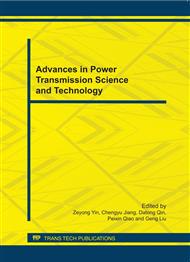p.268
p.273
p.278
p.283
p.287
p.293
p.297
p.301
p.305
Single Versus Bi-Directional (Reversal) Gear Tooth Bending Stress and Life (S-N) Evaluation
Abstract:
The significant gear fatigue bending life variation between the single directional versus bi-directional loading had been observed over the decades, but very limit information has been revealed. To gain the comprehend understanding of this subject for practical usages, the author thus first tried to apply the conventional popular fatigue theories to evaluate the difference, but in vein. This report is to describe the course of assessment and also propose a new method to minimize the discrepancy between the theoretical and test results.
Info:
Periodical:
Pages:
287-292
Citation:
Online since:
August 2011
Authors:
Keywords:
Price:
Сopyright:
© 2011 Trans Tech Publications Ltd. All Rights Reserved
Share:
Citation:


